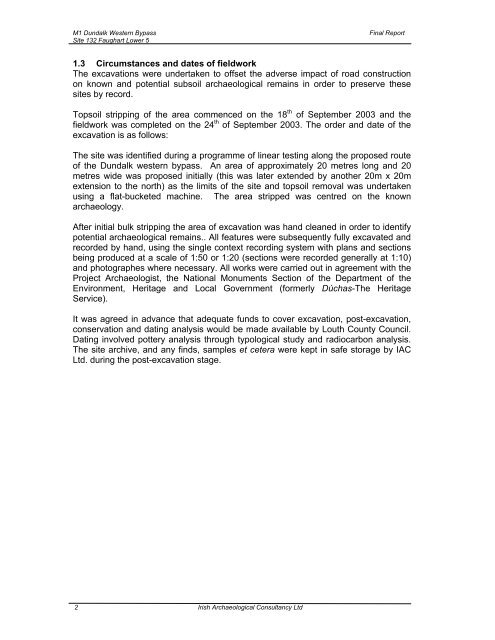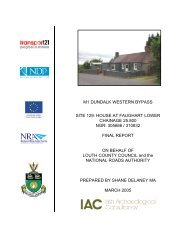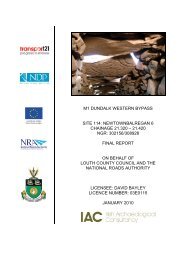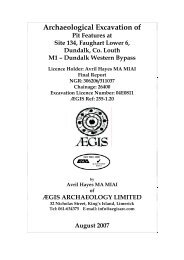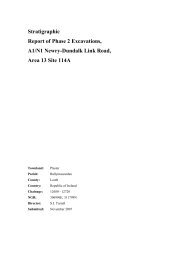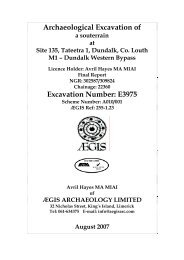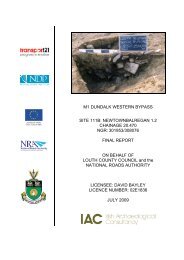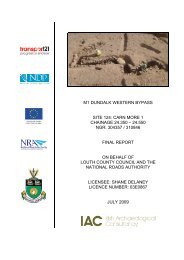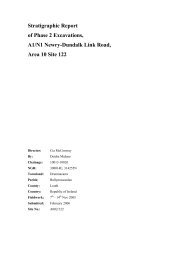Faughart Lower 5 Final Report - ASI Louth
Faughart Lower 5 Final Report - ASI Louth
Faughart Lower 5 Final Report - ASI Louth
Create successful ePaper yourself
Turn your PDF publications into a flip-book with our unique Google optimized e-Paper software.
M1 Dundalk Western Bypass<br />
Site 132 <strong>Faughart</strong> <strong>Lower</strong> 5<br />
<strong>Final</strong> <strong>Report</strong><br />
1.3 Circumstances and dates of fieldwork<br />
The excavations were undertaken to offset the adverse impact of road construction<br />
on known and potential subsoil archaeological remains in order to preserve these<br />
sites by record.<br />
Topsoil stripping of the area commenced on the 18 th of September 2003 and the<br />
fieldwork was completed on the 24 th of September 2003. The order and date of the<br />
excavation is as follows:<br />
The site was identified during a programme of linear testing along the proposed route<br />
of the Dundalk western bypass. An area of approximately 20 metres long and 20<br />
metres wide was proposed initially (this was later extended by another 20m x 20m<br />
extension to the north) as the limits of the site and topsoil removal was undertaken<br />
using a flat-bucketed machine. The area stripped was centred on the known<br />
archaeology.<br />
After initial bulk stripping the area of excavation was hand cleaned in order to identify<br />
potential archaeological remains.. All features were subsequently fully excavated and<br />
recorded by hand, using the single context recording system with plans and sections<br />
being produced at a scale of 1:50 or 1:20 (sections were recorded generally at 1:10)<br />
and photographes where necessary. All works were carried out in agreement with the<br />
Project Archaeologist, the National Monuments Section of the Department of the<br />
Environment, Heritage and Local Government (formerly Dúchas-The Heritage<br />
Service).<br />
It was agreed in advance that adequate funds to cover excavation, post-excavation,<br />
conservation and dating analysis would be made available by <strong>Louth</strong> County Council.<br />
Dating involved pottery analysis through typological study and radiocarbon analysis.<br />
The site archive, and any finds, samples et cetera were kept in safe storage by IAC<br />
Ltd. during the post-excavation stage.<br />
2<br />
Irish Archaeological Consultancy Ltd


